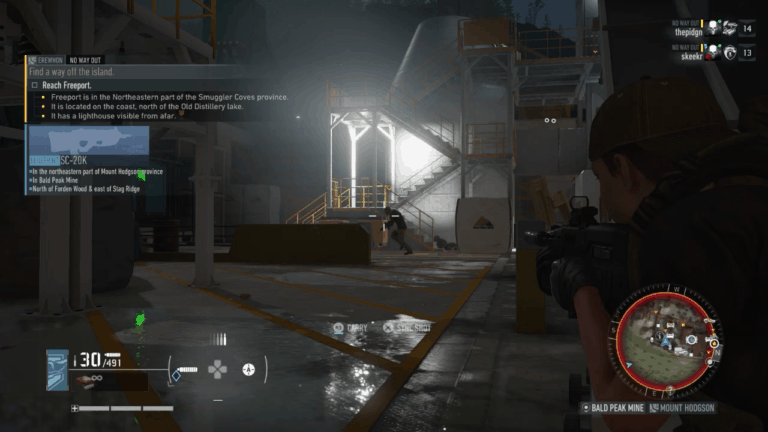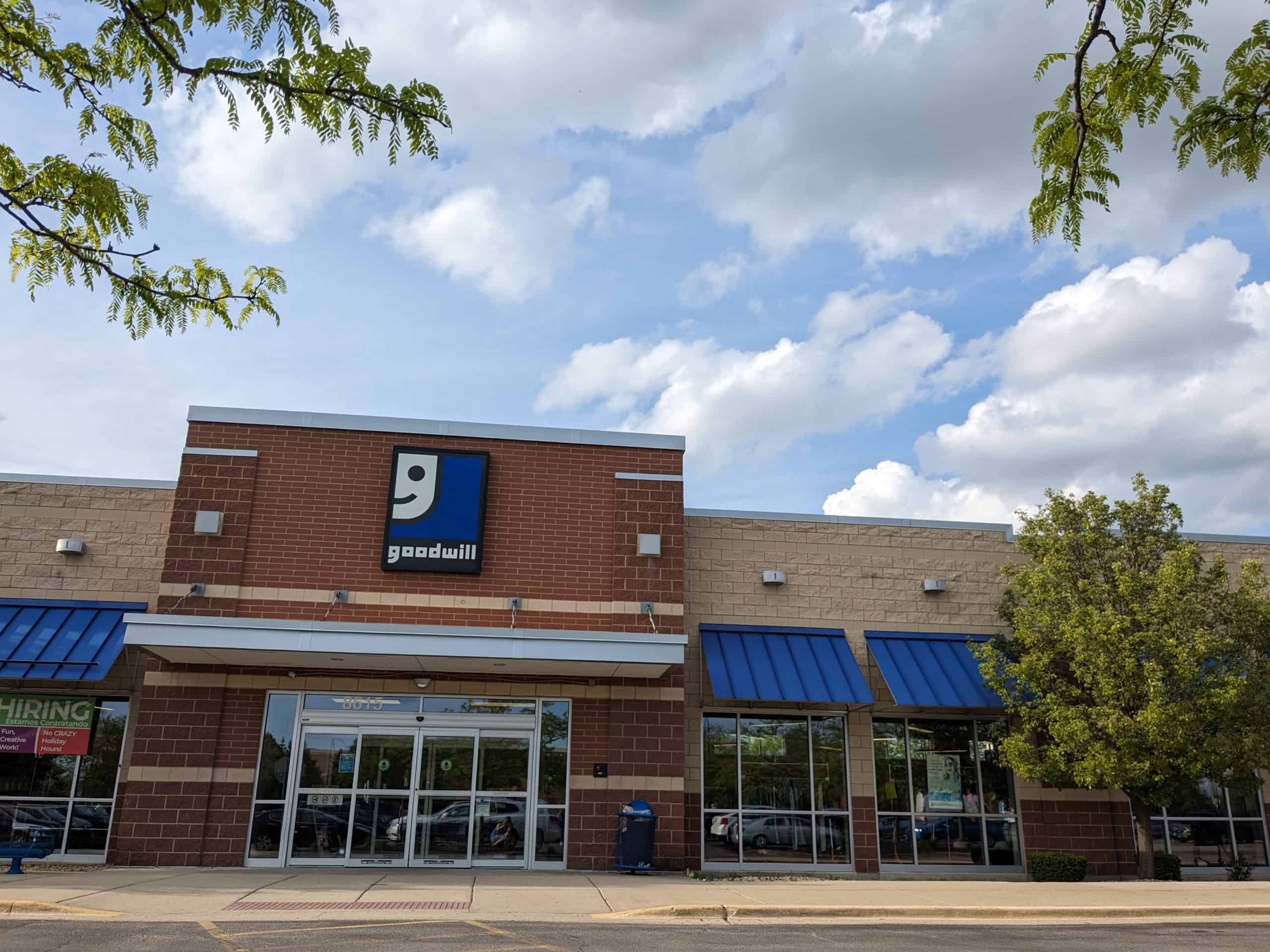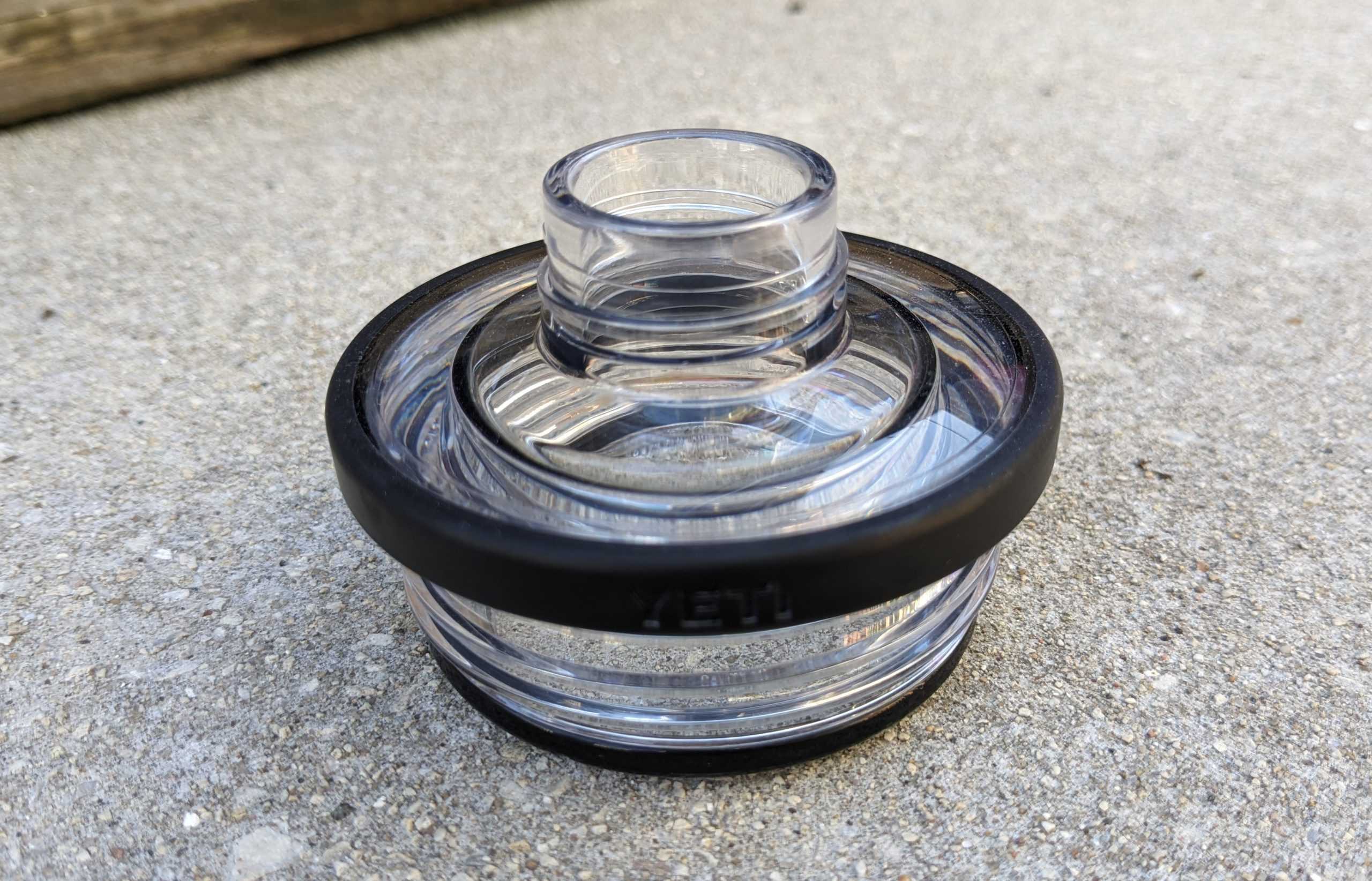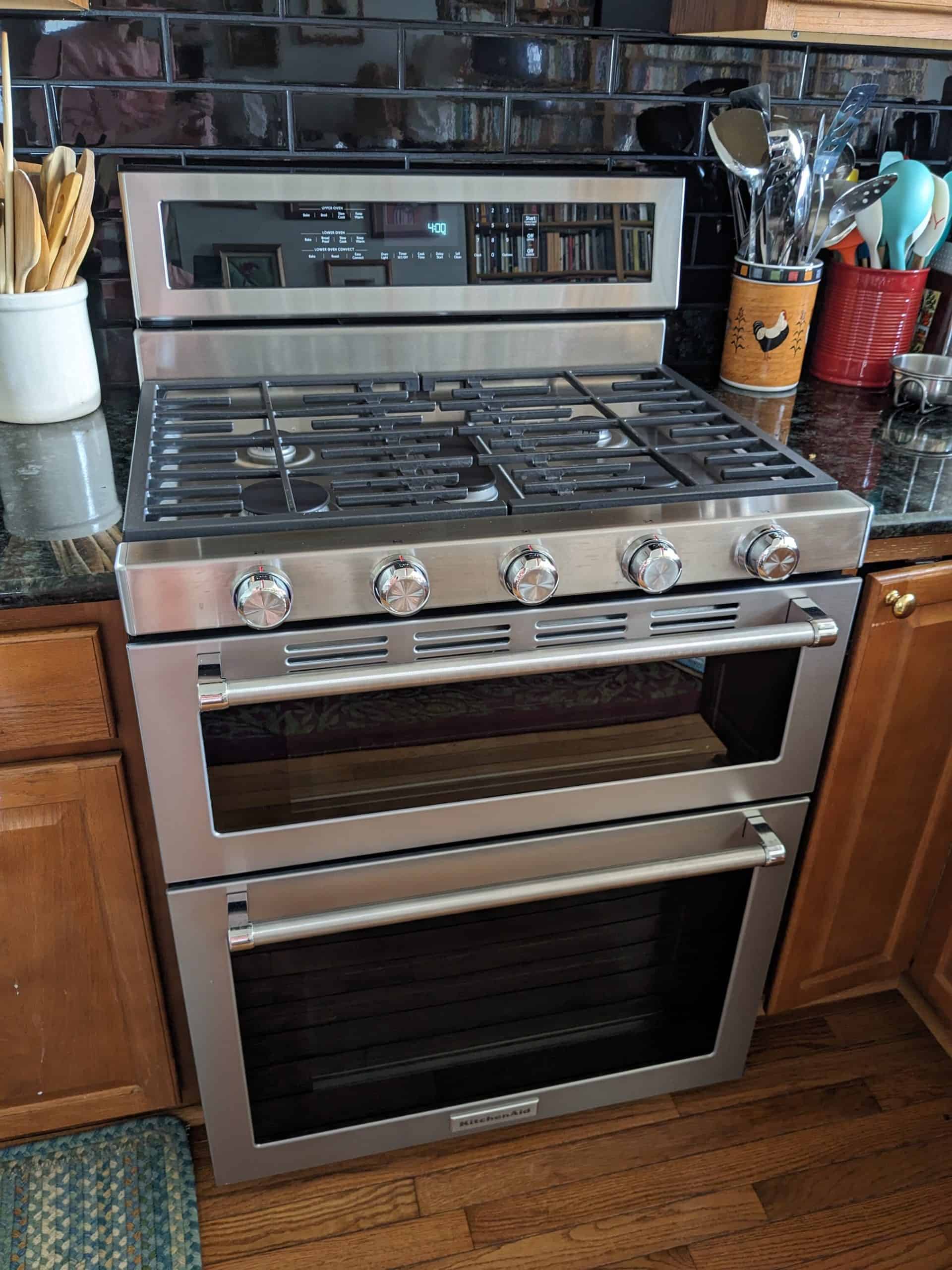This year at Co-op Gaming Dot Info, we spent the dog days of summer playing Ghost Recon: Wildlands. We loved that game. We never wanted to stop playing it. We even played its DLCs. You can imagine how hotly we anticipated Breakpoint’s release. In fact, we dreamt of playing Ghost Recon indefinitely. We wanted to continue playing Wildlands and its DLCs until Breakpoint came out, and then start Breakpoint. If Breakpoint had decent PvP, perhaps we could milk our Ghost Recon fandom for an entire year of playtime. An eternity. Pretty much forever. We didn’t want to play another game.
We spent a long time writing a huge article detailing every specific thing that made Wildlands the perfect tough-as-nails, fast-paced co-op game the two of us could enjoy every night. It turns out that Ubisoft didn’t value a single thing we valued in Wildlands. Every aspect of the game we’d praised had been dropped in Ubisoft’s rubbish bin. The first time we played, we had a knee-jerk reaction to all the evils we didn’t want to see in a Ghost Recon game:
- Health and stamina bars
- Hateful loot, from health kits to gear and guns with tier levels and randomly generated stats
- Survival elements (wounds, fatigue)
- Character classes, skill trees, and special techniques
- Fabricated fantasy setting that spits on Tom Clancy’s grave
Despite the fact Breakpoint isn’t the sequel we wanted, we vowed to give it a chance. Over the course of a few weeks, we spent several evenings exploring Auroa, massacring Sentinel security guards, and upgrading our gear scores. Each time, we wished we were playing something else. We didn’t hate playing Breakpoint, but we didn’t have a smashing time, either. The game failed to hook us.
After each session, we promised to give Breakpoint another chance, to venture farther in the map, if only to write a more detailed article about why we didn’t like it. Instead, we procrastinated. We played Division 1. We played Battlefield I and V. We started playing Code Vein. The first twenty minutes of all those games captivated us, pushing us further from Breakpoint.
At this point, we’ve procrastinated for three months. It’s safe to say we’re never going to get around to playing more Breakpoint. In fact, we’re more likely to fix our leaky kitchen faucet stem than turn on Breakpoint again.
1. Breakpoint First Asks Players to Survive, Rather Than Think Tactically
The very first action you must take in Breakpoint is to heal an injury. This is the first prompt on the screen, your first taste of your agency as Lieutenant Colonel Anthony “Nomad” Perryman. This is the gameplay Breakpoint players must master before all else, Ubisoft seems to say. You know what other games start the character at less than full power? Survival games. You start Arc starving and thirsty, you’ve got to eat some berries. This is a strong statement about the game and its creator’s intent, and it’s not our cup of tea.
What was it that hooked us in the first hour playing Wildlands? Probably there are thousands of potential first actions players could take, and first experiences they could have, but ours was a simple act of problem-solving. We attempted the “Defend the Radio’ mission. Wildlands presented us with a problem—defense of a radio against roughly 30 incoming combatants—and we desperately wished to solve it. During our many attempts to complete the mission, we discovered that we couldn’t run-and-gun through the mob—the mission could only be completed with intelligent, practical use of Wildlands’ tools: explosives, vehicles, and the drone.
This process—of being presented with a problematic enemy group or fortification, deciding our approach and forming a plan that made use of the appropriate tools, and then following through with ever more precision and accuracy each time—incited endless discussions, analysis, and growth in our game. It was fun.
In our hours playing Breakpoint, there were no problems to solve. There was no feedback suggesting we had oodles to learn about the game’s skills and tools. There was no glimpse of what a great Breakpoint “ghost” might look like. We simply snuck into enemy encampments, hid behind cover, and gunned down enemies. Of course, we learned not to fight enemies whose gear scores outranked our own.
Video games that force us to think—more than aim and press buttons—are a rare treasure. And video games that give clear feedback—from the beginning—when we’re failing to properly use the game’s tools, abilities, and systems make us excited to get good. We don’t care if Breakpoint is more of a survival game, just some open-world shooter, or a fantasy exploration game. We’re disappointed that the most important things we had to do during our trip around Auroa were to heal an injury and avoid guys wearing nicer vests than ours.
2. Forget Tom Clancy, Breakpoint Is a Cybernetic Toilet Bowl
In our article about Wildlands, we praised the interesting real-life info found throughout the game’s storyline and accompanying documentation. Alas, Breakpoint is set in the future, a fantasy Earth, with imaginary bad-guys, on the non-existent island of Auroa, probably inspired by the phantom islands of Aurora.

We’re glad that no nations will take offense to their depiction in Breakpoint, but we’re sorry that Ubisoft couldn’t reinvent their hard-core realism for the 2019 market. It’s still cool to get players thinking about the kinds of real-life geopolitical issues that Tom Clancy books include. Breakpoint is so far from books such as Patriot Games or Rainbow Six that it shouldn’t have Tom Clancy’s name attached to its title.
So Breakpoint’s setting isn’t modeled on a real-world location, and the game has nothing like a Tom Clancy plot—so what? We play games with cartoon graphics and isometric graphics. We skip all the cutscenes and love a game all the same. But Breakpoint’s setting managed to bewilder and annoy us.
One cold, quiet winter evening, many years ago, the two of us were kicking a can down an alley. As it rattled across the pavement, skittering between lumps of ice, a woman on the second floor of an apartment building leaned out her back door. Into the night she wailed, “Would you pleaaaaasseeee just stop!” Perhaps she had a migraine.
Imagine my surprise when, after all these years, I heard that same voice emanating from my television speakers, in the latest Tom Clancy Ghost Recon game.
“Would you please just stop!”
“Knock it off, okay? Would you just stop with this shit, okay?”
“Stop. You’re making me anxious.”
These are the utterances we heard from NPC workers at a Breakpoint enemy compound we’d “liberated.” I can’t believe these are the things people would say to a workplace shooter marching around the jobsite with a semi-automatic weapon. Their voices were awkward and incongruous.
In the imaginary land of Auroa, everything is a bit familiar and a bit misplaced. Some of the buildings look like 2017 office complexes, with rectangular flower planters in Greenery 15-0343, the Panatone 2017 color of the year. There’s even some trendy wood-slat facades on boxy buildings that look like new-build so-called “smart” homes. Other structures are more like Wildlands refineries, with painted pipes, metal gangways, and piles of gravel. Outdoor locations are littered with shipping containers, cargo boxes, storage buildings, and defensive fortifications. You come across feral pigs, the rightful inhabitants of a Pacific Ocean island, and limpid pools with beautifully rendered birds skimming their surface.

Then you come across robotic drones, giant “behemoth” tank robots, and cute little decorative robots.

You can imagine Skell Technology, like General Motors, is one of the largest manufacturing companies in the world, and all its diverse and far-reaching operations occur here on Auroa, requiring any and every type of plant, shipping yard, refinery, murder-robot, and office complex. Even so, these scenes have no context, no identity. Exploring them is like peeking into a stranger’s linen closet: “Got some sheets there, some towels here, and look, I suppose that’s the crate they use to take the cat to the vet.”
As we encountered the various discordant elements of Auroa, we began to wonder who exactly our enemies were. Who had we been killing? Despite watching every cutscene, during the time we played Breakpoint, we had no idea who these guys in black with the awesome gear score were supposed to be. If you saw the Ghost Recon Breakpoint: E3 2019 Conference Presentation, it looked as if Walker, a former “ghost” we met in Wildlands, and his “Wolves,” other ex-ghosts, would be our sole adversaries in Breakpoint. It sounded cool to fight AI with toolsets identical to ours.
Skell Technology may have come along after E3, or else the guys who made the promo knew that an “evil corporation” was so hackneyed it didn’t merit inclusion. We didn’t reach Breakpoint endgame (or even middle-game), so correct me if I’m wrong, but in the game that was released, it seems only main mission bosses and select compounds are composed of Walker and his Wolves.
The rest of these guys—the guys who guard every encampment and stand at the sides of roadways—they’re Sentinel, a private security force, possibly composed of ex-military guys. In other words, they’re rent-a-cops. This is far from admirable. These poor guys are far from the types of enemies that make your blood boil.
In Wildlands, we were convinced by people we were fighting. They were a bunch of cartel guys sitting around doing coke and listening to music, and they had the Bolivian army in their back pockets. They were funny, they were plausible, and they were personable, though they may have been stereotypical.
In a game, you like to know who your enemies are, though in reality, they’re all just lines of code. Game creators today take great pains to make their games “immersive.” They want players to feel present in and connected to the computer-created worlds in which their avatars make love and war. Knowing thine enemy should be one of the easiest things to get right. After playing Breakpoint, we played Battlefield, where combatants are grouped by nation. There’s something stimulating about defeating “the Germans” or “the Americans” in a game with a slice of historical context on the side. It’s silly and heavy at the same time.
Breakpoint’s world is a cybernetic toilet bowl. Many things plopped into the bowl: the serene natural beauty of a Pacific Ocean island, corporate sprawl, rent-a-cops, coastal shipping and receiving, design like the 2017 Architecture Masterprize winners, robot tanks, ex-Special Forces bros, NPCs with migraines, and more. What we saw when we played Breakpoint swirled together and went down the pipes. We had no idea what we were supposed to be experiencing. Out went realism, out went Tom Clancy, and with him went the soul.
3. I’d Rather Be Looting in Division 1, Division 2, Borderlands 3, or Even—God Forbid—Path of Exile
Division 1 and Division 2 may pump our inventories full of disappointing junk, but at least the act of looting in those games is fast. You shoot enemies and they drop loot. You collect it, and then you’re trapped in the eternal dream of equipping it, deconstructing it, or selling it to a merchant.
In Breakpoint, you shoot enemies and they drop loot—but there’s also intel, weapon cases, and locked loot rooms in every base. So you clear a compound. Then you collect the loot the enemies dropped. And then you scan your minimap for intel and weapon cases. To locate them, you climb up ladders, walk down gangways, and duck into doorways. It’s a scavenger hunt. Then you pick up a corpse and carry him to the loot room—you need his fingerprint ID to unlock that locked door.
Looting a newly conquered base in Breakpoint took us longer than it took us to clear the enemies from that base. Because of the tiered loot and gear score system, most items are junk, but you crave junk with higher digits. By the time we were finished looting and shuffling our inventories, we were ready for a nap. I can’t believe that the pacing in Wildlands was so fast that we were happy to spend a moment using our sniper scopes to look for supplies on the minimap.
4. If We Can’t Walk Downhill, Give Us a Sled
Playing ESO taught us the joys of climbing in video games—there’s nothing like worming up a rocky incline and raining damage on players below who can’t figure out where to climb to kill you. We loved climbing in Wildlands. Like in ESO, you weren’t sure you could climb a mountain until you attempted to interact with its rocks and grassy slopes.
Breakpoint punishes climbing. If your character sets foot on any incline, he will begin to slip, losing stamina and sliding like an out-of-control snowball. The animation is amazing. You feel the sense of reality and gravity that a 2019 game can provide. The fun-factor is negative 100. It sucks to slip.
We were reminded of Far Cry New Dawn, which introduced the completely fantastical, not-at-all realistic double jump mechanic. The double jump was dumb, but fun. The new mechanic allows players to interact with their Far Cry map in a new, unusual way—pleasure, not suffering.
We wish Breakpoint had included its cool slide animation, but gave us a sled to use like the parachute. You’d see a slippery path, equip your sled, and fly down like a ghost on a roller coaster. Rocky inclines would be one of the best parts of the game. When a game presents a problem or limitation, it’s awesome to use a gadget, tool, (or explosives) to get around it. Isn’t that the spirit of the Ghost Recon franchise?
5. Exploration Mode, AI Teammates, and Enemy AI: An Unfinished Game, A Disjointed Vision, and Ubisoft Doesn’t Care That We Know It
Starting Breakpoint takes a long time—possibly more than an hour. Menus and tutorials are overpowering. At some point, you’re asked to make a choice: exploration mode or guided mode? Guided mode gives players pins on the map; exploration mode gives them clues about mission locations. In the help text for exploration mode, it says exploration mode is “the way the game is meant to be played.”
If it’s meant to be played a certain way, why do we have the choice, especially at the beginning? Probably the developers left this choice, and its accompanying language, in the end product because they themselves had conflicting opinions about how the game should be played.
We hate looking for crap in video games (see our article about finding main quest objectives in Fortnite). We despised matching photographs to map features to find lost cars in Wildland’s Narco Road DLC. It goes without saying that Breakpoint’s exploration mode did not excite us. We selected guided mode.
Every time I browsed my menus, Breakpoint nudged me to switch from guided mode to exploration mode, “the way the game is meant to be played.” Every time I saw the prompt, I spent so long considering which mode in which to play that I wanted to turn off the game. I love choices, but don’t give me two options and tell me just one is “correct.” Leave this type of craftiness to our loving wives.
Naturally, guided mode didn’t work out. We boarded a helicopter and traveled directly to a quest marker. There, enemy gear score was leagues ahead of our own. We wiped and flew to another mission, where we met with more confusion, chaos, and powerful enemies. We flipped our difficulty settings from extreme to moderate and then normal. We tried to guess whether our two-man group was simply underpowered compared to the recommended group of four. We figured headshots from crappy guns can’t penetrate enemy helmets; or we were trash; or we were lacking good gear and passives; or we were not stealthy enough; or all of the above.
We’d wasted hours. Finally we turned on exploration mode. We wandered out of Erewhon and found some low-ranking toy pigs to destroy. Suddenly the game was playable.
The controversy about AI teammates bugged me, too. If you watched the Ghost Recon Breakpoint: E3 2019 Conference Presentation, you know that the game was not designed with AI teammates. The creators’ vision, and the coders’ labors, did not include AI teammates. Following community feedback prior to E3, Ubisoft vowed to retrofit AI teammates into the system they’d ideated without our AI friends.
Then they released the game without AI teammates. After the firestorm of rage and disappointment, they had to release a statement (October 2019 “Moving Forward”) reiterating that the game’s 1-player mode was designed “pure solo,” without AI teammates, and that AI teammates would be added at a later date.
To summarize: At E3, Ubisoft told the public the game wasn’t finished. AI teammates required thousands more hours of coding. In October Ubisoft released the game. Again they told the public that the game wasn’t finished. AI teammates required thousands more hours of coding. There couldn’t be a more clear example of releasing an unfinished game!
When I booted up Breakpoint in October, directly after the game’s release, one of the grandest, most profound shocks was that the enemy character models seemed less responsive to bullets and damage than they were in Wildlands. They didn’t flinch. They didn’t cry out in pain. There was no stagger. Instantly this made me hate Breakpoint. This video, from December 1st, shows a Breakpoint enemy taking multiple shots to the leg; there’s no stagger and no reaction until his death animation, in which he falls in a manner that suggests shots to the leg took him down:

I’m not the only player who noticed the lack of bullet response in Breakpoint. “During the beta I was laying a few shots on the shotgunner. But he just kept running up on me like nothing, not 1 flinch and he popped a round into me that killed me,” said Redditor EPops5116 in a thread complaining about the lack of flinch and stagger in both Breakpoint and Wildlands.
Was there flinch and stagger in Wildlands? Yes, there was, though it may not have been as much as you’d like. Youtuber Gmoney Mozart gives us a clear demonstration in this video. Keep in mind that he’s complaining about Breakpoint, but only showing footage from Wildlands.

Today I tried to take the same video I took in December. I shot at Breakpoint enemies’ legs and arms. To my surprise, I saw them flinch and stumble. Breakpoint has already had four patches. I read through every patch’s notes. I saw no mention of improved enemy response to bullets. Perhaps the lack of reaction was mere bugginess from the individual AI, or not all of Ubisoft’s improvements warrant mention in their official notes.
Patches and incremental improvements are part of the development cycle, and many games, after years of patches, fixes, content updates, DLCs, and expansions don’t even resemble their younger, awkward, release-date selves. But I can’t tell you how disappointing it was to pay $60 for a triple-A title and get an unfinished game. If we had waited a few months, we could have spent half as much and received a better game—a game where the enemies flinch when you shoot them with bullets.
We Plan to Reinstall Breakpoint. . . In A Few Years
One night we turned off Breakpoint and booted up Division 1. We hadn’t played Division 1 before—we were starting at the beginning, with character creation and the tutorial—just as we had in Breakpoint. What a difference! We had more fun in the first two hours of Division 1 than we’d had all days of playing Breakpoint combined.
The contrast between playing an Ubisoft game of yesteryear and a new one made us vow to never buy another Ubisoft game at release again. And it made us totally give up on Breakpoint. We didn’t hate the game. If it was the first Ubisoft game we’d ever played, we might have stuck with it. For now, there are too many games that hook us in the first ten minutes to continue trying to find out if we’re going to have fun at some point with Ubisoft’s revisionist reinterpretation of Ghost Recon.
So I say we’re uninstalling Breakpoint, with the caveat that we fully plan on reinstalling it a few years from now—maybe at the time the next Ghost Recon game is announced. By then, Ubisoft might have ironed out Breakpoint’s kinks, and we can appreciate the game they built. Until then, we’ll allow those rent-a-cops to continue patrolling Skell Technology’s dry docks and drawing their bi-weekly paychecks.






